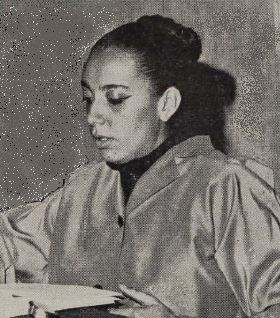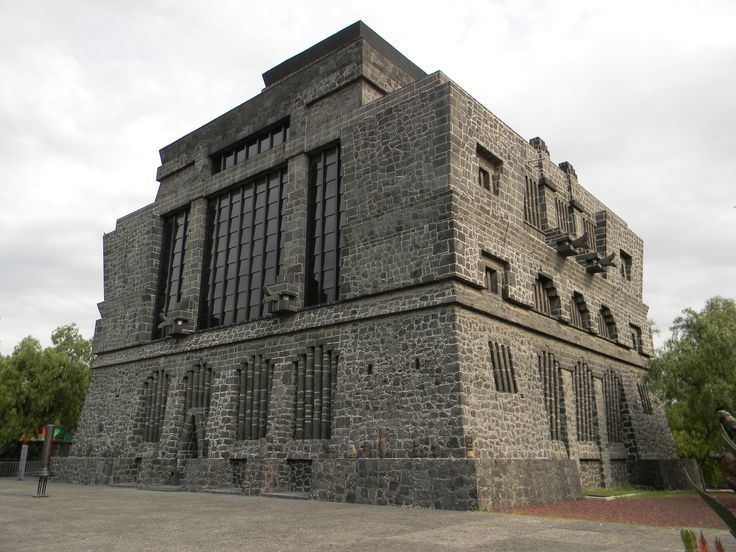Nationality Mexican Years active 1959–1969 | Occupation Architect Name Ruth Marin | |
 | ||
Full Name Ruth Maria Rivera Marin Died 15 December 1969(1969-12-15) (aged 42)Mexico City, Mexico | ||
Other names Ruth Rivera de Coronel | ||
Ruth Rivera Marín (18 June 1927 – 15 December 1969) was a Mexican architect. Her professional experience centered on teaching, institutional management, theory and practice related to architecture. She was the first woman student of the College of Engineering and Architecture at the National Polytechnic Institute.
Contents
Biography

Ruth María Rivera Marín was born in Mexico City on 18 June 1927 to parents Diego Rivera Barrientos, a prominent Mexican muralist, and mother Guadalupe Marín Preciado, a well-known actress and writer. Her elder sister was Guadalupe Rivera Marín. She completed her primary education at the Escuela Alberto Correa and finished her secondary education at Secondary School N° 8. Rivera was the first woman to study architecture at the College of Engineering and Architecture of the National Polytechnic Institute and graduated in 1950 with the degree title of engineer-architect of the College of Engineering and Architecture (ESIA). Simultaneously with her studies of architecture, Rivera studied dance with Waldeen Falkenstein and acting with Seki Sano and appeared in stage productions. She married Rafael Coronel, well known Mexican painter and they had three children, Ruth Maria, Pedro Diego and Juan Rafael.

In 1947, Rivera began teaching visual arts at the Teacher's training college and at the La Esmeralda School of Painting and Sculpture. She participated in the Social Service Brigades of 1948, doing her public service in Celaya, Guanajuato and drafting a master plan for the city before heading to Italy in 1950 for further studies. She studied urban rehabilitation at the Institute of Restoration in Rome for two years. After her graduation, Rivera returned to Mexico and began teaching in 1952 at the EISA. She taught subjects related to theory of Architecture, Architectural Composition Workshop Planning and Urban and planning theory. During the early years of her career she also pursued in subjects such as literature, anthropology, theater, dance and fine arts. She actively interacted with Diego Rivera (her father), Juan O'Gorman, Pedro Ramirez Vazquez and Enrique Yanez and furthered her intellectual acumen and nationalist ideas.
From the early 1960s to 1964, Rivera was head of planning for the SEP on the National System of Regional Rural Schools. Rivera was involved with the building of the National Medical Center (Spanish: Centro Médico Nacional). She worked on the Museum of Modern Art Chapultepec in close collaboration with Pedro Ramirez Vazquez. Rivera also worked with Luis Barragán on the Museum "El Eco" in Mexico City. Her most noted work was the creation of the Anahuacalli Museum in Coyoacan in association with her father, Diego Rivera, and Juan O'Gorman. She was manager of the Instituto Nacional de Bellas Artes, and also worked in the architectural department of Palacio de Bellas Artes which was earlier known as the Teatro Nacional. She was delegate in the 1964 International Architects Congress held in Budapest.
Rivera published many articles and books. She managed the Journal Cuadernos de Arquitectura y Conservación del Patrimonio Artístico of the INBA, which initially had a supplement called the Cuadernos de Arquitectura (Notebook of Architecture). The Notebook became a separate publication under Rivera and evolved into "one of the most important publishing projects for the Institute" discussing both technical and artistic components of architecture. Though its publication lasted only from 1961 to 1967, its theoretical and practical significance and value as the basis for teaching spurred an effort concluded in 2014 to collect all 20 volumes and digitize them as a lasting reference.
Rivera died on 15 December 1969 in Mexico City. Posthumously, the Architecture Center at INBA was renamed in her honor.
Memberships
Rivera was a member of many institutions. Some of her active work in both national and international organizations were in the College of Architects of Mexico, the Mexican Society of Architects, the Mexican Association of Art Critics, and ICOMOS, the Subcommittee on UNESCO Museums. She served as the President of the International Union of Women Architects.
